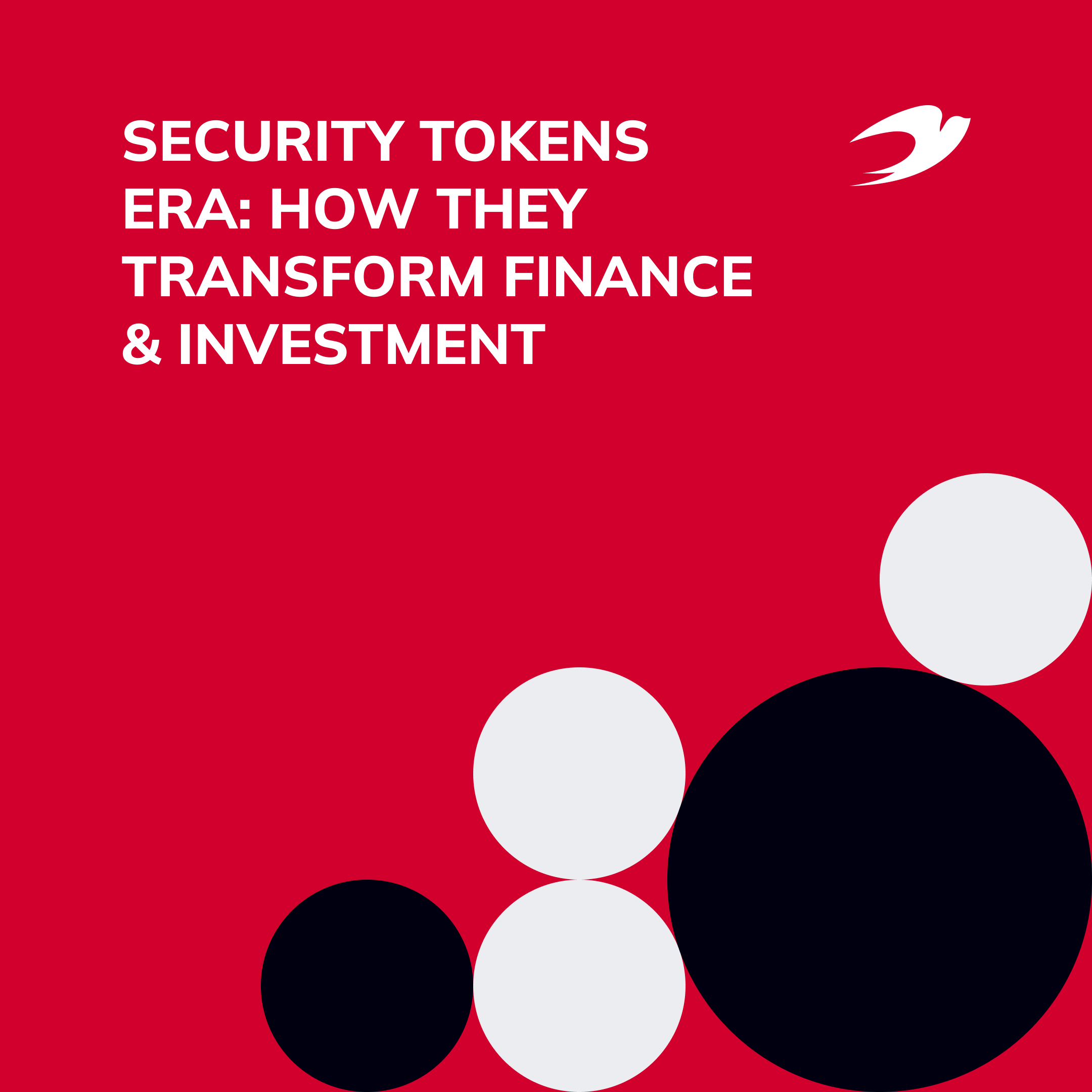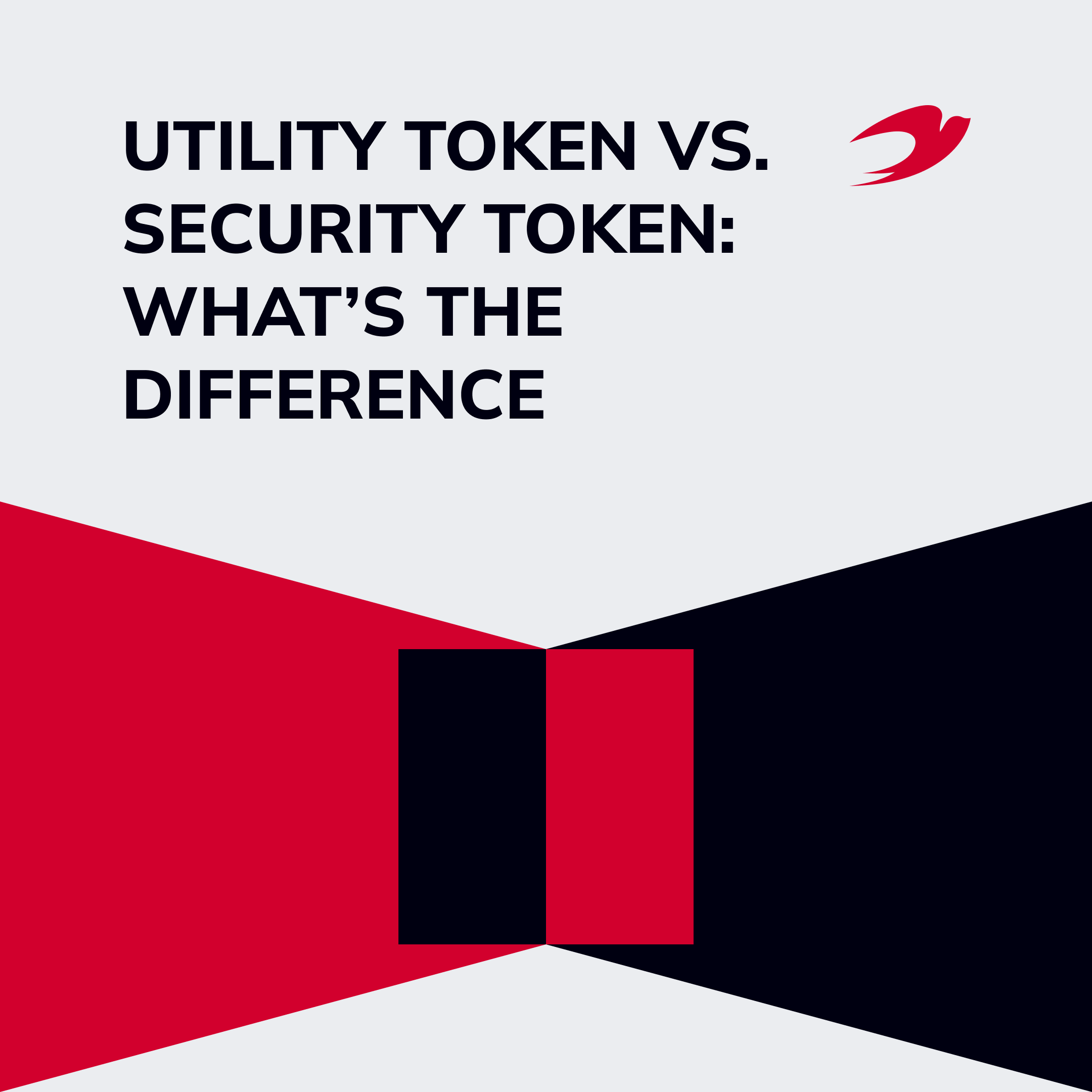Today, the RWA tokenization concept holds immense potential for the crypto industry, and is believed to start a “new Golden Age in blockchain and traditional finance” (Coindesk). The rising trends for tokenized securities, fractional ownership, and tokenized real-world assets will set up a new era in the blockchain development landscape, with lucrative trillion-dollar opportunities for business.
Realizing the potential of real-world assets in crypto, the traditional finance giants (such as BlackRock, Fidelity and Hamilton Lane) and many blockchain-based startups (like Securitize, Tzero, etc.) have already got into the game. Moreover, thousands of tech companies are developing powerful DeFi for tokenized RWAs, hoping to become the next “unicorn” solution. However, an exceptional RWA tokenization project for crypto requires a deep understanding of the market, as well as profound knowledge of blockchain development.
In this article, we’ll discuss the basics of real-world asset tokenization, covering its advantages, development specifications and key stages of RWA tokenization. Additionally, IdeaSoft experts will review the real-case examples of on-chain RWA solutions to help you better understand its potential for your business and the crypto industry as a whole.
Table of content:
- What is Real-World Asset (RWA) Tokenization?
- What Are the Advantages of Tokenizing Real-World Assets?
- Role of Blockchain Technology in RWA Tokenization
- How to Get Started with RWA Tokenization: 5 Key Stages
- What is the Future of RWA Tokenization?
- Successful Use Cases of Real-World Asset Tokenization
- Summary
What is Real-World Asset (RWA) Tokenization?
Real-world asset tokenization is the process of virtualizing real-world (tangible and intangible) assets into digital tokens that can be stored, managed and traded on a blockchain.
The entire concept of RWA tokenization is based on creating a blockchain-based digital investment solution for subjects that have value or a relevant physical existence. So, instead of keeping the property rights for real estate, fine arts, equities or other valuable items on paper, its ownership is fully converted on-chain, where it can be easily traded, managed or shared.
Real-world asset tokenization brings a whole new perspective on asset ownership, mainly by transforming it into a digital token. Along with the faster and more efficient exchange experience, these tokens allow to facilitate liquidity and improve the asset management, helping to reduce the paperwork and optimizing the expenses. Additionally, RWA tokenization helps to remove the middlemen, such as lawyers, brokers and banks, while keeping the exchange process transparent and secure for all the participants.
So far, the tokenization of real-world assets has been applied across many industries, covering real estate, vehicles, collectibles, fine art, noble metals, securities, stocks and bonds, etc. That said, no matter if you want to sell $100 million worth of Van Gogh’s “Starry Night” or buy the “shares” of an iconic Barbie’s Malibu DreamHouse – tokenized RWAs, will make it possible.
What Are the Advantages of Tokenizing Real-World Assets?
As we already know, the tokenization process allows the virtualization of the RWA ownership or legal rights in a crypto environment. But what are the real benefits of real-world asset tokenization?
From the business standpoint, the main gains of a solution built on real-world assets and blockchain include:
- Faster and more flexible asset trading and exchange, which are not tailored to the “9 to 5” business shifts;
- Increased liquidity, which means larger profits;
- A larger pool of clients and investors due to the lower entry barrier;
- Improved system security and trustability;
- Enhanced business competitiveness.
At the same time, the RWA tokenization can benefit asset owners, investors and traders by providing:
- Greater accessibility, as the only things needed to trade RWA tokens are the Internet connection and a digital wallet;
- Allowing for lower fees and commissions, that only involve the minimal gas fees to instantly transfer the RWA tokens;
- Reducing risks for assets sharing or trading due to the secure and transparent RWAs trading environment;
- Facilitating asset exchange, storage and management within a decentralized system;
- The direct trading mechanism involves only a seller and a buyer, and removes any other intermediaries (financial institutions or banks, appraisers, notaries, or any other related authority).
Therefore, the numerous benefits of real-world asset tokenization have proven the value and long-term prospectiveness of this technology in the crypto landscape.
Got lost in tech details?
Let us help you figure it out, and correctly draw up the requirements for your project
Role of Blockchain Technology in RWA Tokenization
Blockchain technology plays an essential role in tokenizing real-world assets, as it is commonly applied for building a solid connection mechanism between the physical world and the crypto industry. Using blockchain-based solutions for the RWA tokenization niche enables creating a secure, transparent and efficient crypto environment for digital exchanges. At the same time, blockchain allows addressing many challenges in the RWA digitalization, such as social mobility, asset storage, exchange environment and so much more.
As they retain the value of real-world assets (stocks and bonds, real estate, commodities, etc.), tokenized RWAs have relatively low price volatility compared to the other on-chain crypto assets. Therefore, tokenizing real-world assets offers the potential for quicker secondary market trading, enhanced transparency regarding compliance with tokenized asset origins, and a range of side opportunities.
How to Get Started with RWA Tokenization: 5 Key Stages
To come up with a powerful and competitive solution for RWA virtualization, understanding the core tokenization stages is of the essence. Dr. Xu, a Lecturer in Real Estate at The University of Manchester has identified five core stages in RWA tokenization, which play a critical role in digital tokens infrastructure development:
- Identify a real-world asset. The first stage implies choosing the asset that will be represented in tokens. Basically, that covers any type of tangible or intangible RWAs that have value.
- Establish the RWA ownership. Next, it’s important to verify the ownership of the selected asset, ensuring it is properly registered, licensed and compliant with the legal requirements and regulations. As a rule, this is handled by auditors, lawyers, notaries and other professionals with the relevant expertise.
- Build a smart contract solution. At this stage, the dedicated development team builds a smart contract that defines and governs the RWA tokenization conditions. This covers the number of tokens, their value, as well as the rights and obligations of the token owners.
- Issue the token. Once the smart contract is created, the RWA tokens are issued on a blockchain-powered network, where they can be purchased in exchange for stablecoins or fiat currency.
- Manage and trade the token. Being issued on-chain, the real-world asset tokens can be then traded and managed on secondary markets, such as decentralized exchanges, money markets and other financial services within the DeFi ecosystem.
No matter if it’s tokenized real-world assets, or fractionalized ownership on the assets available through tokenization, or even ownership rights on the physical assets represented in tokens – the RWA tokenization will be always represented by these essential stages.
What is the Future of RWA Tokenization?
Real-world asset tokenization opens up a wide range of cross-industry opportunities, converting nearly anything around us into digital forms.
Andrii Lazorenko, Co-Founder and CEO of IdeaSoft
No matter if it’s an artwork, real estate, oil supply contract or even the intellectual property – it can be stored, managed and validated through the protocols within blockchain network.
By creating a transparent and secure system to tokenize real-world assets, companies can expand their market presence to the global level, adopt the new technologies and enhance their funding. RWA tokenization makes direct investments accessible among larger audiences and enlarges the liquidity pool through a wide range of digitalized RWA tokens.
According to Binance’s July 2023 RWA market research, the tokenized asset market is estimated to reach $16 trillion by 2030, which is a significant increase from $310 billion as of 2022. Real estate, bonds, money, gold, art, collectibles and equities have the biggest perspectives for on-chain asset tokenization through blockchain and traditional asset fractionalization (usually represented by exchange-traded funds, real estate investment funds, etc).
Finally, with RWA tokenization becoming more mature and widespread, governments and local authorities will adopt regulatory and legislation background for these digital projects. As a result, in the upcoming two to three years, we’re likely to witness a notable breakthrough in tokenization solutions for real-world assets.
Talk To An Expert
Let us help you with tech details & requirements for your project!
Successful Use Cases of Real-World Asset Tokenization
Learning the existing examples of RWA tokenization is an excellent chance to get some helpful insights and inspiration ideas for your future product. That is why, our blockchain experts at IdeaSoft reviewed the projects that gained huge popularity in the real-world assets and DeFi niche:
- Fractionalized Real Estate Ownership. One of the earliest use cases of real-world asset tokenization enabled making real estate assets liquid and selling its ownership through blockchain-based tokens. The best-known example is the $18 million deal of Elevated Returns, a New York-based asset management firm.
- Tokenized Artworks. By tokenizing the ownership of particular artwork prints, these can be offered for sale and, once redeemed – the physical piece can be delivered to the given address. As an option, the token’s ownership can be fractionalized and shared between multiple holders. For example, this is already offered by TheArtToken (TAT), which offers tokens that represent fractional ownership of Contemporary and Post War Art. The physical originals of these artworks are stored in a warehouse secured by the Swiss government.
- Intellectual Property (IP) Tokenization. This technology helps to tokenize the IP ownership rights: patents, copyrights, design patterns, logos, trademarks and trade secrets. According to the American Bar Association, the take-it-or-leave-it nature of tokenized rights can increase the market for IP rights, mainly by providing a legal, transparent and secure trading landscape. Additionally, owners can advertise their IP broadly without the concern of experiencing expensive marketing or legal costs for unqualified purchasers. The examples of IP tokenization are commonly applied in the NFT trading landscape, where certain IP rights are attached to particular NFTs. For instance, a prominent example of this concept is OpenSea, the largest decentralized NFT marketplace.
Having learned the real-case products based on real-world assets and blockchain, you can now have a better understanding of the current market trends and potential opportunities for your future product. And, with these valuable insights, you’re sure to create a powerful RWA solution that ideally matches your business objectives and needs.
Summary
Real-world asset tokenization is a powerful solution that can revolutionize the concept of asset ownership, making it more accessible, affordable and secure. Powered by blockchain, tokenized RWAs can enhance liquidity, enable fractional ownership, and create more opportunities for decentralized asset management and digital investments.
Now that you’ve learned the RWA tokenization essentials and its development specifications in crypto, it’s the right time to get into the game with a custom tokenization solution for real-world assets!
With over 250 successful products in our portfolio, IdeaSoft has accumulated years of cross-industry expertise and development experience in DeFi, NFT, blockchain and other tech areas. For each of our clients, we create a custom product development strategy that is tailored to the goals, requirements and needs of their company or enterprise.
Do you need an expert quote on real-world asset tokenization or want to hire a dedicated team for DeFi development? Contact us to discuss how to enhance your business with the RWA tokenization solutions today!



